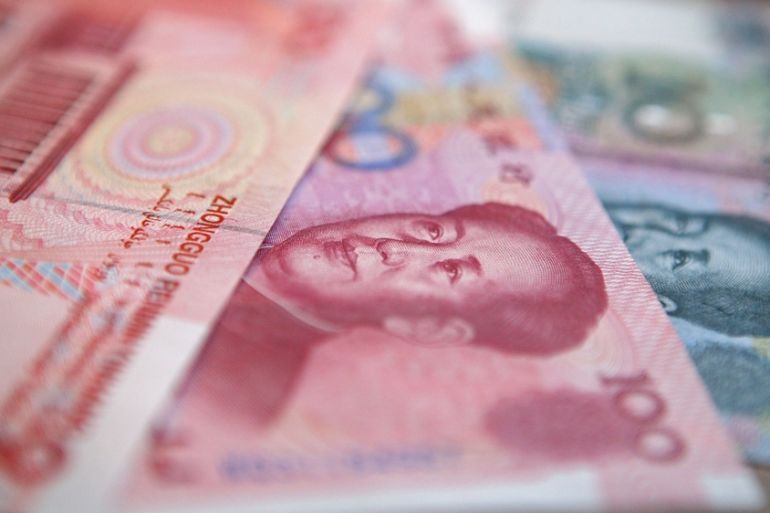China’s economic growth hits nine-year low
China’s economic growth slows down to 6.5 percent in the third quarter as trade frictions with the US take their toll.

China’s economic growth has slowed down to 6.5 percent in the third quarter – its slowest quarterly growth since 2009 – as a campaign to tackle mounting debt and trade frictions with the US take their toll.
The world’s second-largest economy expanded 6.5 percent in the July-to-September period year-on-year, according to official gross domestic product (GDP) figures released on Friday by China’s National Bureau of Statistics (NBS).
Keep reading
list of 4 itemsChina’s economy beats expectations, growing 5.3 percent in first quarter
Inside the pressures facing Quebec’s billion-dollar maple syrup industry
Manipur’s BJP CM inflamed conflict: Assam Rifles report on India violence
The rate is down from 6.8 percent and 6.7 percent in the first and second quarters, respectively, but in line with a growth target of roughly 6.5 percent for the year set by China’s economic policymakers.
“Faced with an extremely complex environment abroad and the daunting task of reform and development at home, China’s economic growth remained generally steady,” said NBS spokesman Mao Shengyong.
The reading will likely put pressure on the leadership to provide fresh support as investors grow increasingly concerned about a flood of cash leaving the country, which has seen the yuan and stock markets fall to four-year lows.
China is in the midst of an increasingly bitter trade row with the United States, with both sides exchanging tariffs on hundreds of billions of dollars worth of goods that have fanned fears about the impact on the global economy.
But the standoff comes at a tough time for Beijing, which is battling to tackle a mountain of debt, with credit tightening and infrastructure investment falling.
And while exports to the US have held up so far, the trade frictions have sapped confidence.
Stock index falls
As a result, Shanghai’s composite stock index has fallen by about a third from its January high, while the yuan has slipped about nine percent against the dollar.
In response, three of China’s top financial officials, including the head of the central People’s Bank of China, made a concerted effort on Friday morning to reassure investors and to stem the market sell-off that one of them called “abnormal”.
Adding to concerns was data showing fixed-asset investment growth remains down. It inched up to 5.4 percent in January-September from a record low of 5.3 percent in the first eight months as Beijing reined in spending on bridges, railways, and highways this year.
Spending appears to be bottoming out thanks to the recent step up in local government borrowing, said Julian Evans-Pritchard of Capital Economics.
But he added: “Looking ahead, we doubt the latest pick-up in infrastructure spending will be enough to prevent the economy from cooling further in the coming quarters.”
Analysts say the slowing growth could prompt an end to Beijing’s fiscal prudence, while the gloomy export picture has reinforced the need for China to rely on its legion of consumers to grow its economy.
“We expect further escalation of US-China trade tensions going into 2019, which will likely be partially offset by yuan adjustment and more growth-supportive fiscal and monetary policies,” JPMorgan economists led by Zhu Haibin, said in a note.
Washington has hit roughly half of Chinese imports worth about $250 while Beijing has responded in kind.
Exports still drive a significant chunk of China’s economy and Washington’s targeting of cars, machinery, electronics, consumer appliances and other products has led many firms to shift production out of the country, or begin considering it.